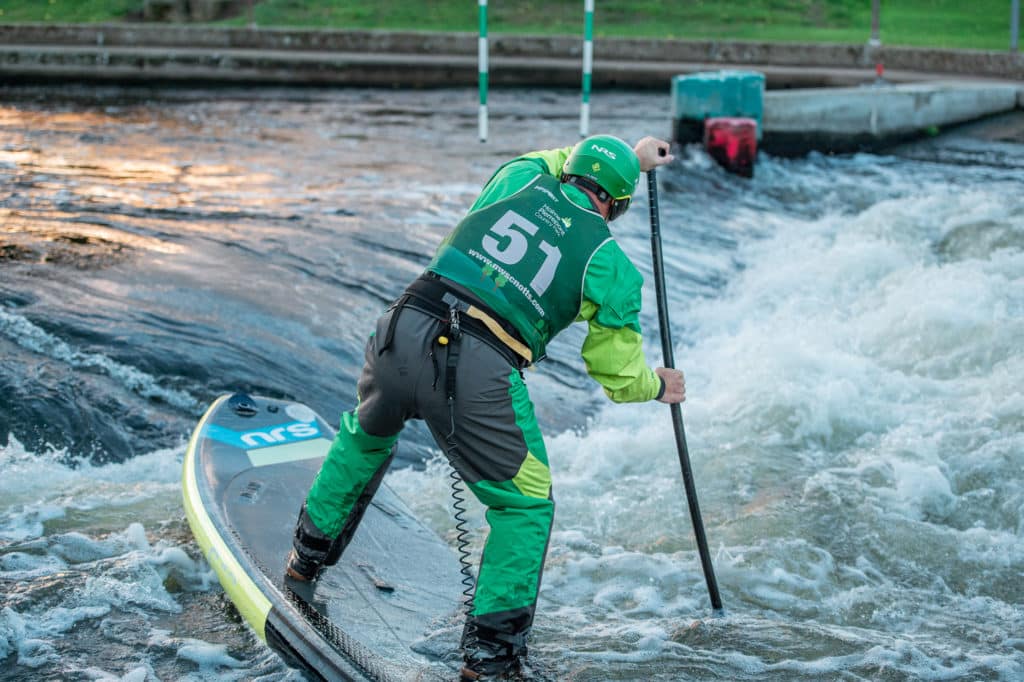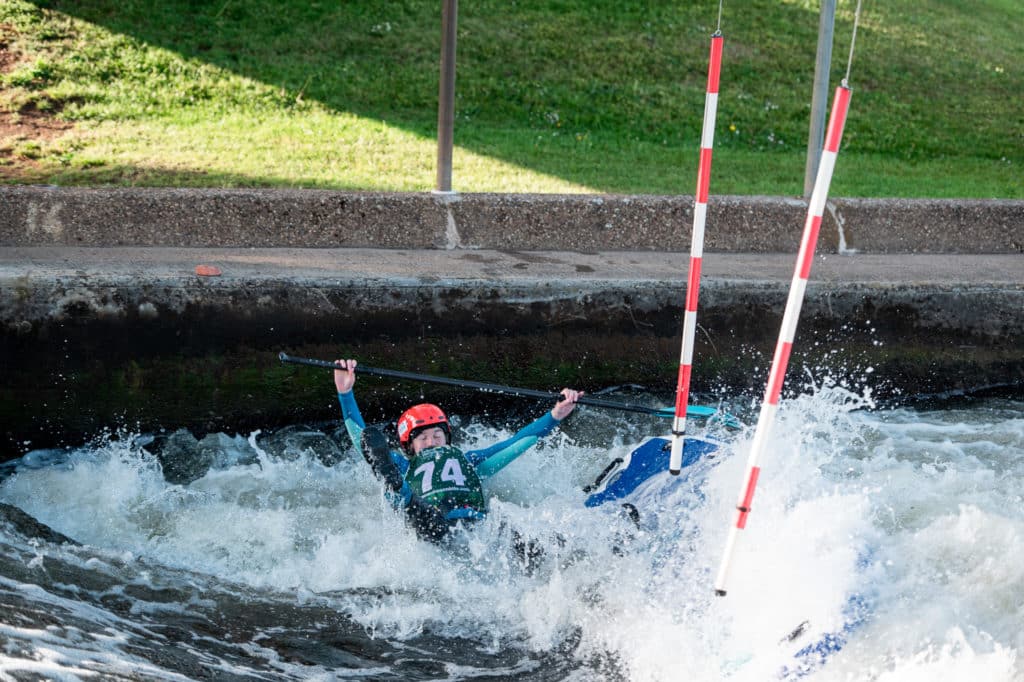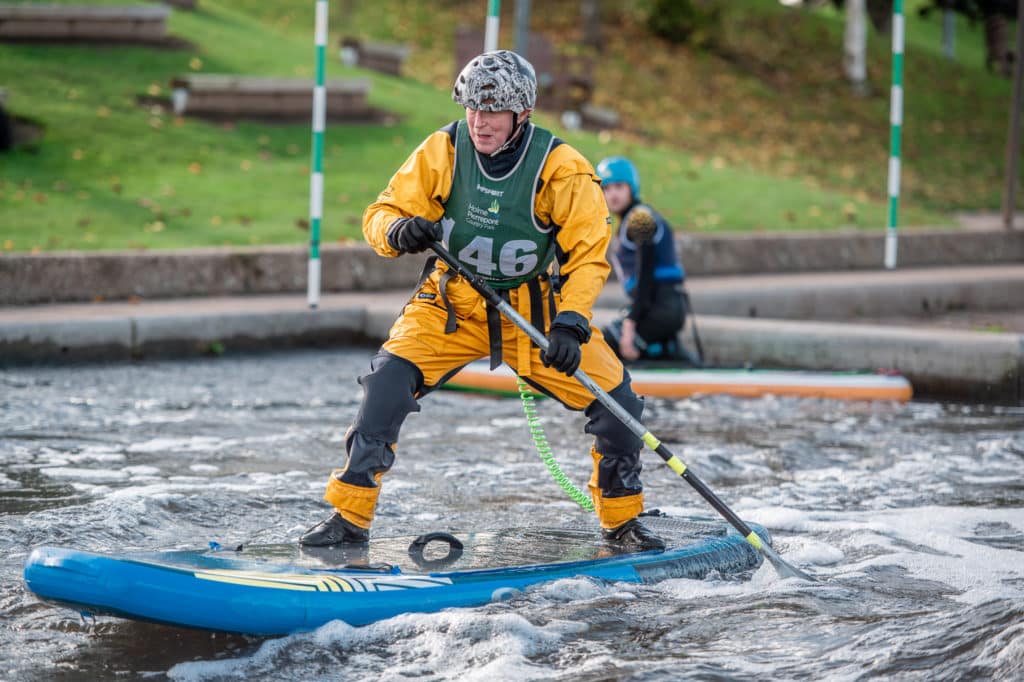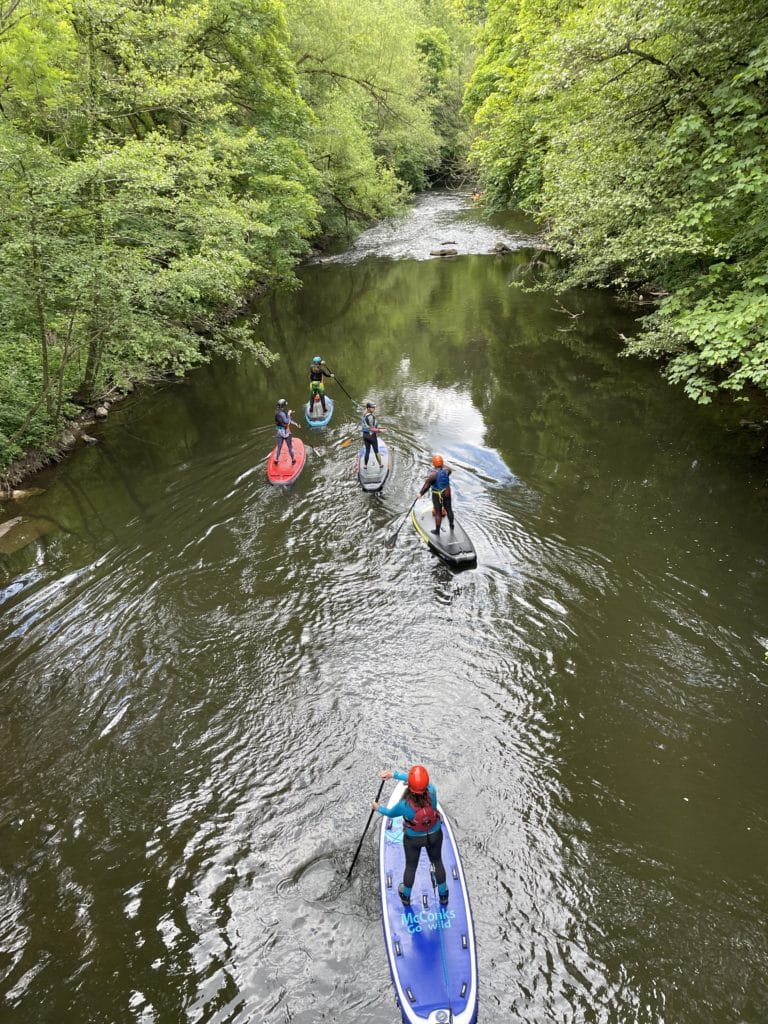Having really gotten into white water stand-up paddling boarding (SUP) in the last year, I decided to put together a series of white water SUP focused articles. The articles are to help guide beginners in white water SUP and each article has a different focus and a different guest writer. My first article was an introduction to the series and a focus on the different boards you find in SUP. My second article looked at the moves on white water that you can do on a SUP and how to achieve them.
This article is going to look at the safety considerations that should be made when taking a SUP on white water. Thank you to Barry Hughes for sharing his wisdom in this article.
For some reading this article, all the safety considerations mentioned below may seem like common sense. There will be readers of this article however who are new to the sport and potentially new to white water completely. When it comes to staying safe and helping others to stay safe, I do not think you can overdo it. With that in mind, please do comment on this article if you think there is anything that we have missed! White water SUP is a growing sport – let’s work together to support new paddlers.
Barry Hughes
Barry Hughes is an experienced white water SUP paddler with a passion for safety and for sharing his love of SUP with others. Barry was one of the very first white water SUP paddlers here in the UK and certainly the first person I ever knew who paddled a SUP on white water. He talks through some of the key safety considerations that should be taken into account when paddling a SUP on white water.

Gear and clothing for white water SUP
Leashes for white water SUP
Leashes are one of the most important things to consider when paddling white water. Having a safety leash to connect you to your board is a must but it should fit correctly and should be the right for the job. It must be a waist mounted leash with a quick release system. I use an HF waist belt which has a buckle at the front and will release at the back under tension. The buckle should have a toggle which is easy to pull and the tail at the front should be no more than 5cm long. When using a leash you should also always carry a river knife. Just in case you need to cut away from it.

Buoyancy aids for white water SUP
Wearing a buoyancy aid (BA) is essential on white water. The water is turbulent and you actually need more buoyancy to stay on the surface than you would on flat water. It also gives you good protection from rocks! Make sure it is a white water specific buoyancy aid and it fits correctly. It should be worn correctly, with all straps tightened.

Helmets for white water SUP
Helmets are another essential. I recommend having ear covering on most white water as this also protects your ears. Many paddlers opt for a full-face helmet if they are paddling extreme white water to give them an extra layer of protection. A helmet should fit easily and be comfortable for long periods of time.

Clothing for white water SUP
Suitable clothing is very important. You need to wear appropriate clothing for the weather and assume that you will go into the water. Clothing should be both warm and suitable for getting wet. Remember that clothing also gives you body armour to protect you from any rocks you may land on. Something like a wetsuit will protect you from both the rocks and cold. Make sure you have a sturdy set of shoes which are either tight fitting or lace up so that you can get a good feel of the board.

Wearing additional body armour should also be considered. For example, shin and knee pads, padded shorts, elbow and forearms guards are body armour that I would regularly wear. This body armour including your helmet will give you the best protection possible. In white water SUP, you do tend to swim a lot and therefore will most likely bash off rocks a lot too.
Lastly, if you are using carabiners for anything then you should only use screw gate carabiners. This is because they will only lock when you want them to and they won’t get caught up on things, which is a must when paddling on moving water!
Choosing where and when to paddle
Outside of attire, it is very important to consider water conditions and remember to paddle within your limits. What you can do in a kayak may not be possible on a paddleboard. Choose to paddle somewhere where you are in control and the environment is suitable. Grades of water in the UK go from 1-6. For most SUP trips I recommend just using grades 1-2. That means flowing water with small rapids. As you progress, you can progress up the grades but should do your research.

It is important to note that you should not paddle on weirs. Weirs can look easier than they are but they can be incredibly dangerous. They can be hard to paddle through and sometimes will have debris or even spikes in the troughs of them.
Last but not least is communication. You need to be able to communicate on the river either by phone, radio or whistle. This should be kept on you, for example, a phone in a waterproof pouch in your BA pocket. Tell people in advance where you are, what rivers you are doing and where your likely escape routes are. It is really important that you do these things as SUP is a very impactful intense sport. If you need assistance from people, you need a way to call them.

Thank you again to Barry for sharing his advice in this article and for going above and beyond when it comes to improving SUP safety in the UK.
Final thoughts
Del here again! When I started white water SUP, I had the advantage of already paddling white water. I knew that I needed to have a helmet, appropriate footwear, warm clothing and a BA. I knew how to plan a river trip safely and was aware of the hazards that can be present in a white water environment.
A safety course, such as whitewater safety and rescue, is a good option to build knowledge and skills if you are new or less experienced with whitewater. There are lots of courses available – do get in touch if you are unsure which one might be best for you.
Although I was experienced with white water, I was ignorant of some of the SUP-specific safety measures that needed to be taken. I was particularly ignorant about leashes and it is only through having friends who already paddled white water SUP sharing their wisdom with me that I became more knowledgeable. Personally, I would now only ever wear a waist leash with a SUP, regardless of what I was paddling. It is in my opinion the safer and more sensible option. It is also the main point of safety that I would share with someone looking to take up white water SUP.
Do get in touch with myself or Barry if you have any more SUP safety specific questions!

3 replies on “A beginners guide to white water SUP #3 – Safety considerations!”
Excellent article and Barry is a legend.
Couple of other things to mention is the use and knowledge of using a throw line and the best way to fall finishing in the defensive swimming position to avoid foot entrapment.
Great to see the sharing of knowledge
Great points – thanks for adding!
[…] article looked at the moves on white water that you can do on a SUP and how to achieve them. My third article looked at the safety considerations that should be […]